2020 Texas Employment Data Revision Highlights

You might also like

TG Magazine
Check out the latest issue of our flagship publication.
Helping Texans make the best real estate decisions since 1971.
As the state’s population grows, so does the need for more housing. Here are the data and tools you need to keep up with housing market trends in your area.
Whether you’re talking about DFW’s financial services industry, Austin’s tech sector, Houston’s energy corridor, or the medical hub that is San Antonio, commercial real estate is big business in Texas.
Mineral rights. Water issues. Wildlife management and conservation. Eminent domain. The number of factors driving Texas land markets is as big as the state itself. Here’s information that can help.
Texas is a large, diversified state boasting one of the biggest economies in the world. Our reports and articles help you understand why.
Center research is fueled by accurate, high-quality, up-to-date data acquired from such sources as Texas MLSs, the U.S. Bureau of Labor Statistics, and the U.S. Census Bureau. Data and reports included here are free.
Stay current on the latest happenings around the Center and the state with our news releases, NewsTalk Texas online searchable news database, and more.
We offer a number of educational opportunities throughout the year, including our popular Outlook for Texas Land Markets conference. Check here for updates.
Established in 1971, the Texas Real Estate Research Center is the nation’s largest publicly funded organization devoted to real estate research. Learn more about our history here and meet our team.


As more accurate time series of employment data become available, the U.S. Bureau of Labor Statistics and the Texas Workforce Commission revise previously published time series of employment for U.S. and Texas. This improves the accuracy and quality of job datasets. These revisions can significantly affect the trajectories of levels and job growth rates in U.S. and Texas industries, as well as in Texas Metropolitan Statistical Areas (MSAs), so it’s important to review and monitor the times series of employment data before and after the revisions.
The Real Estate Center’s analysis shows pre-2018 employment data series have not changed significantly. Consequently, this article compares 2018-19 employment growth rate data from before and after the latest revisions.
The growth rate of Texas nonagricultural employment from January 2018 to December 2019 was revised down from 5 percent to 4.7 percent (Table 1, Panel A). The growth rate of total nonagricultural jobs was revised up from March 2018 to March 2019 and revised down for the rest of 2019 (Figure 1.1). Texas private employment from January 2018 to December 2019 was revised down from 5.7 to 5.3 percent. Total nongovernment jobs were revised up from March 2018 to April 2019 and revised down from April to December 2019 (Figure 1.2).
Annual employment growth rates for three Texas industries and the state’s government sector were revised upward (Table 1, Panel B1). The state’s information industry had the largest upward revision followed by transportation, warehousing, and utilities; professional and business services; and the government sector.
Job growth rates in eight Texas industries were revised down (Table 1, Panel B2). Mining and logging had the largest downward revision followed by construction, other services industries, trade, manufacturing, financial activities, education and health services, and leisure and hospitality. See Figures 1.3-1.14 for 2018-19 employment growth rates by Texas industry.
Job growth rates were revised upward in 14 MSAs (Table 2, Panel A1). Abilene had the largest upward revision followed by Longview, Midland, Austin-Round Rock, Brownsville-Harlingen, Laredo, Fort Worth-Arlington, Texarkana, Waco, El Paso, Amarillo, College Station-Bryan, Wichita Falls, and Odessa. Twelve MSAs had downward revisions (Table 2, Panel B2). San Angelo had the largest followed by Beaumont-Port Arthur, Sherman-Denison, Corpus Christi, Dallas-Plano-Irving, Killeen-Temple, Texarkana, Victoria, Houston-The Woodlands-Sugar Land, San Antonio, Lubbock, and McAllen-Edinburg-Mission. See Figures 2.1-2.26 for 2018-19 employment growth rates by Texas MSA.
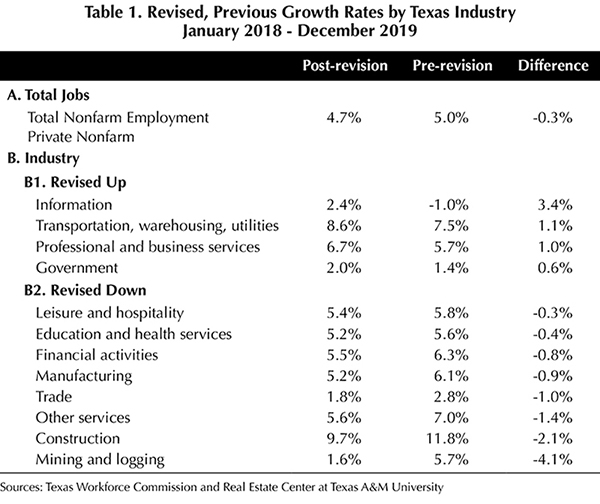

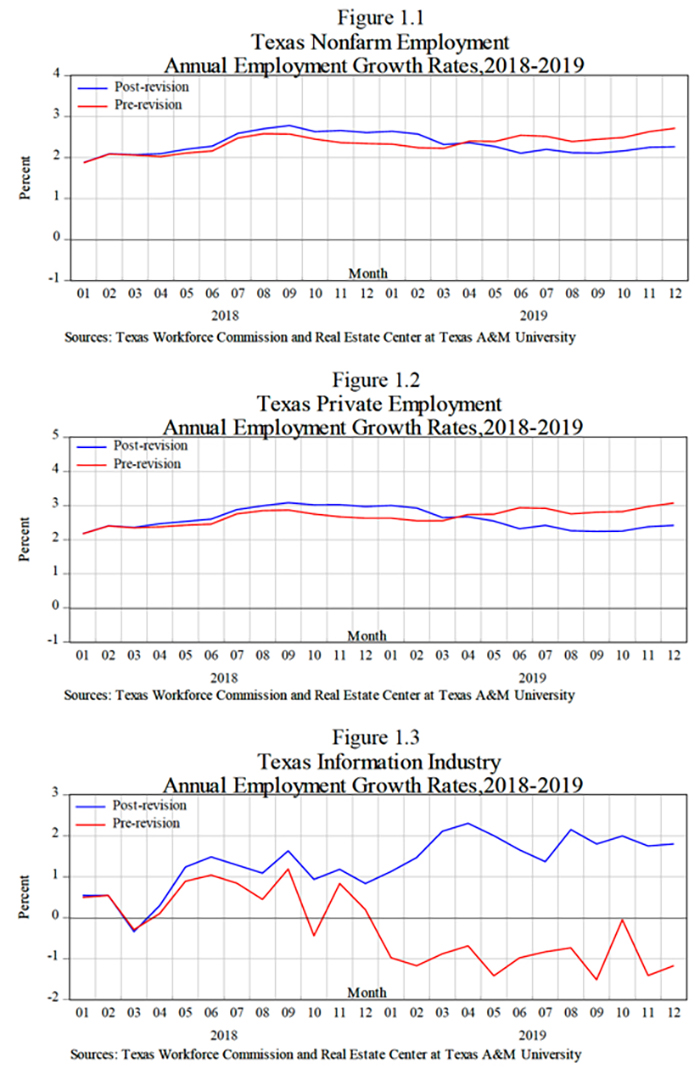
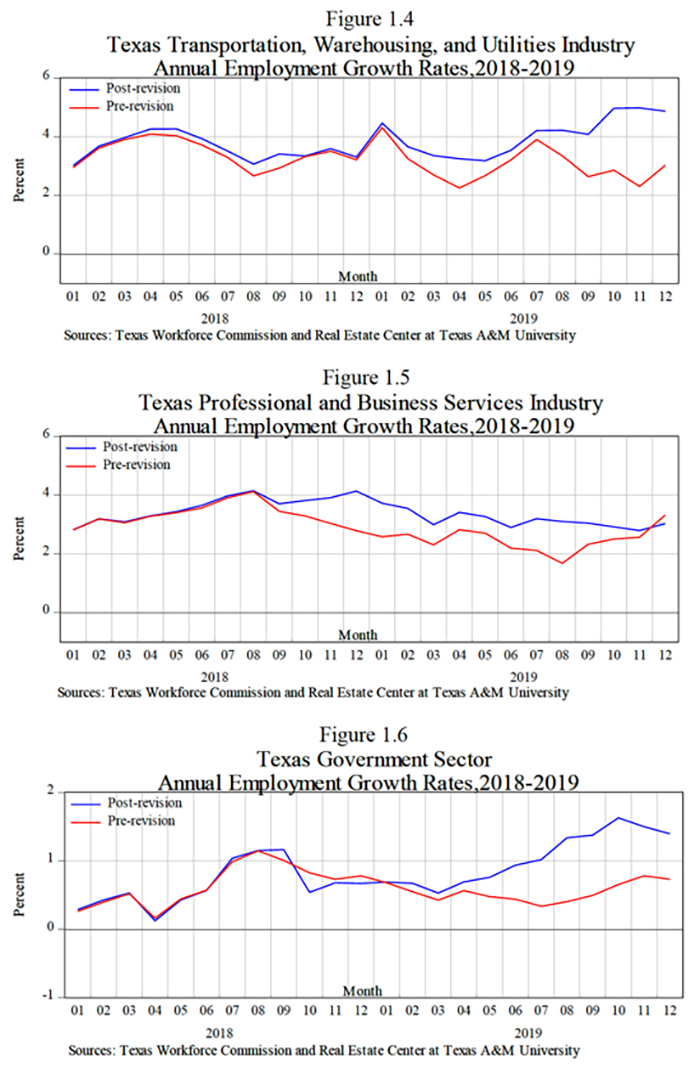
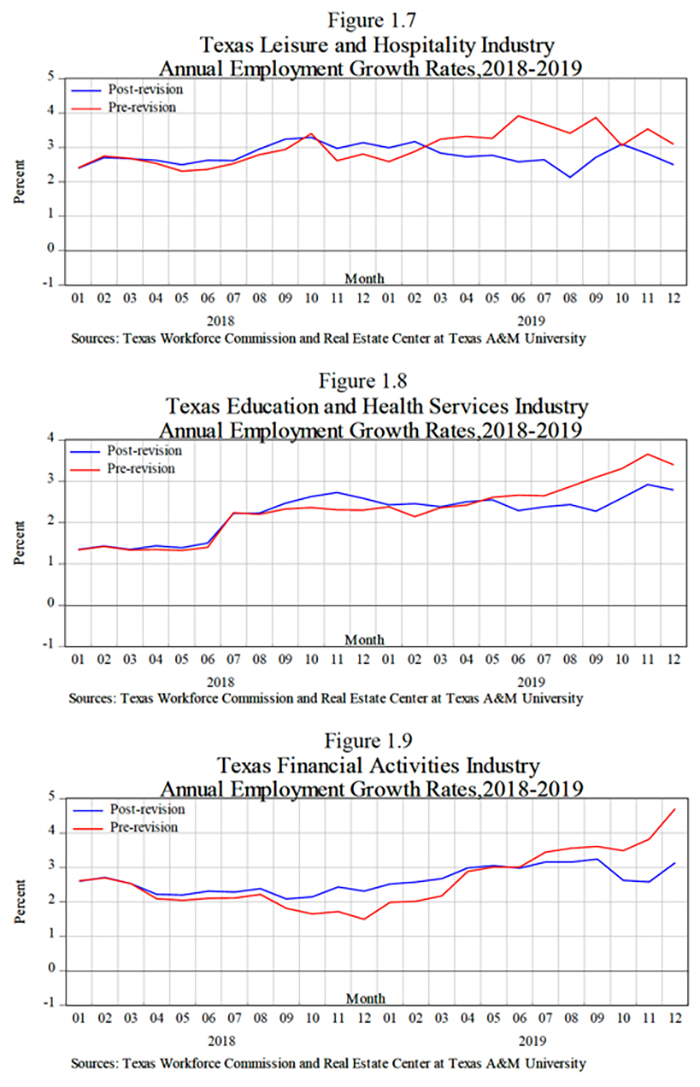

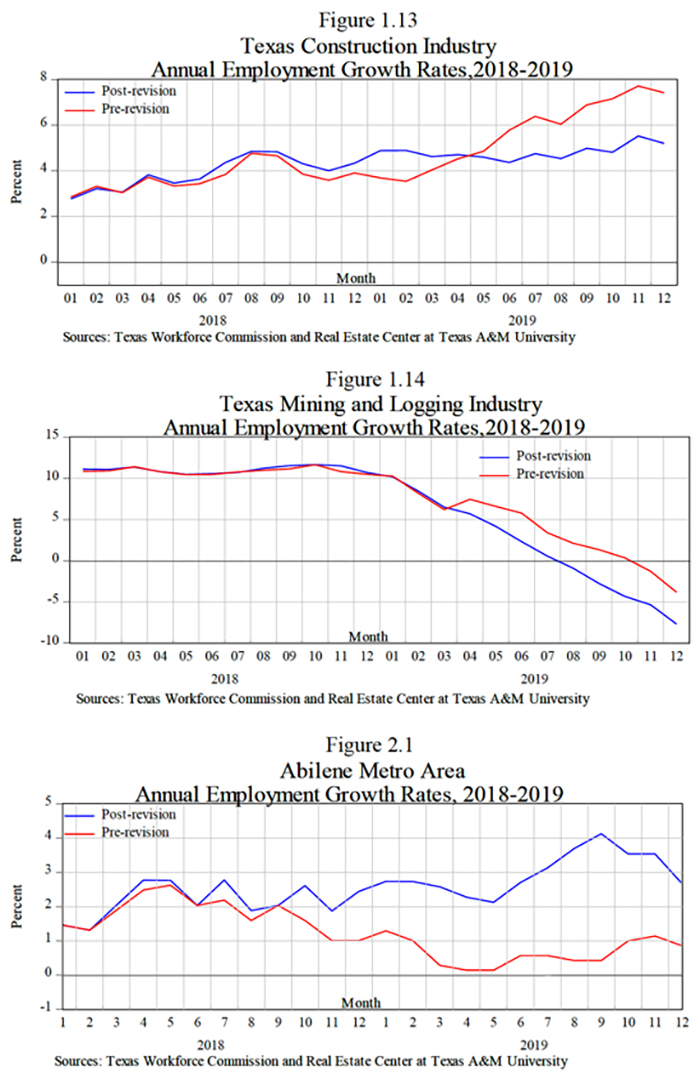


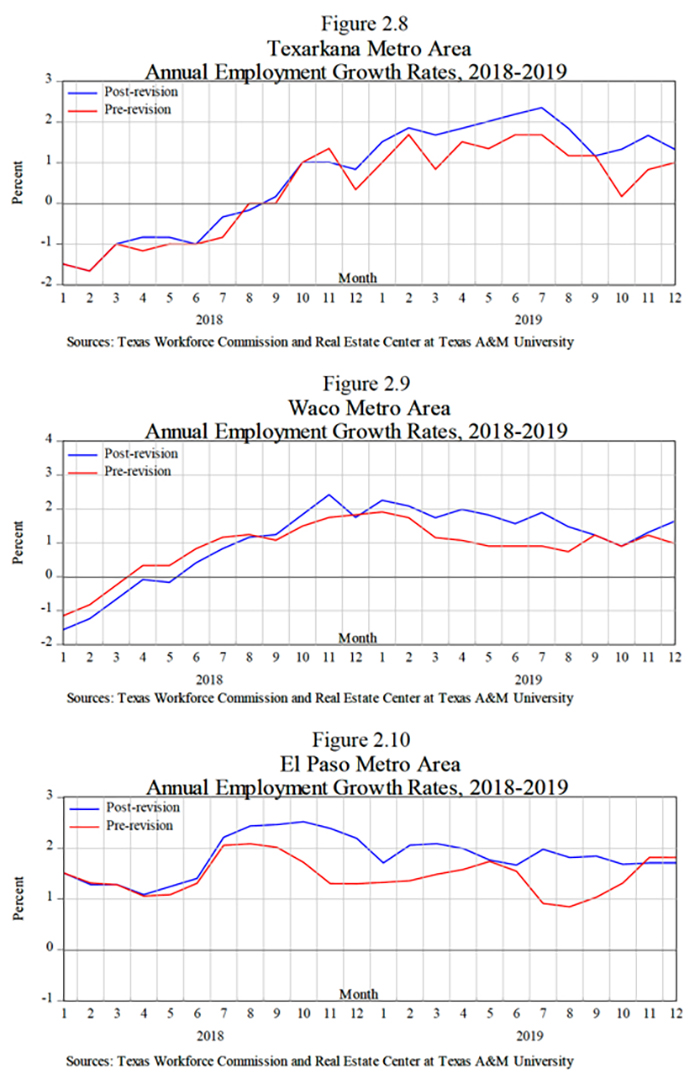


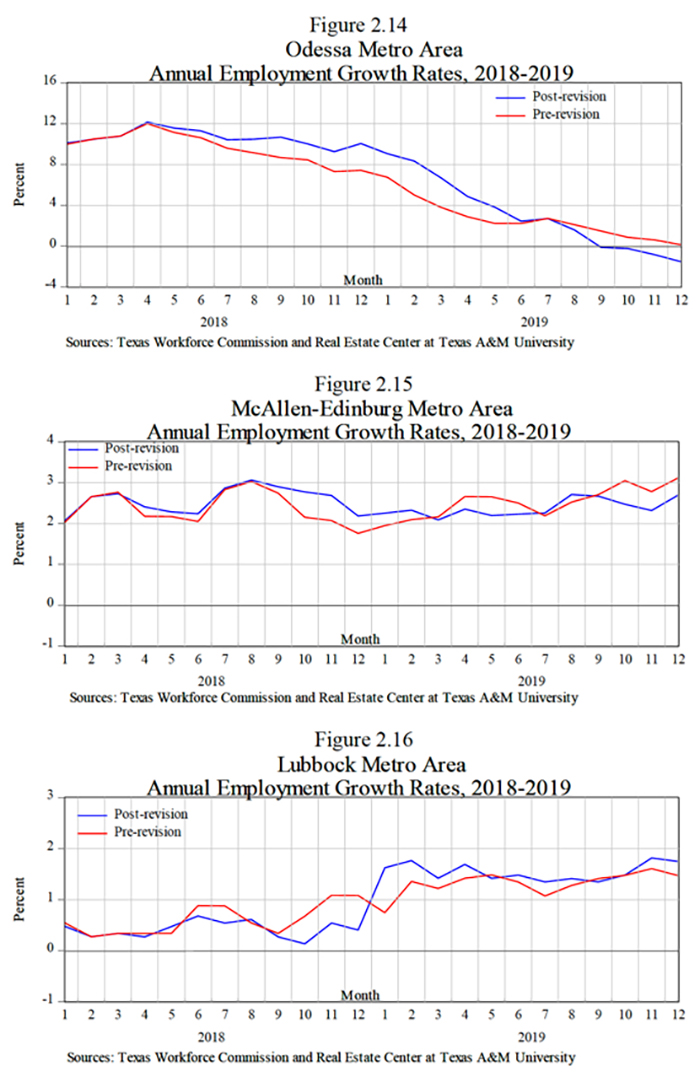
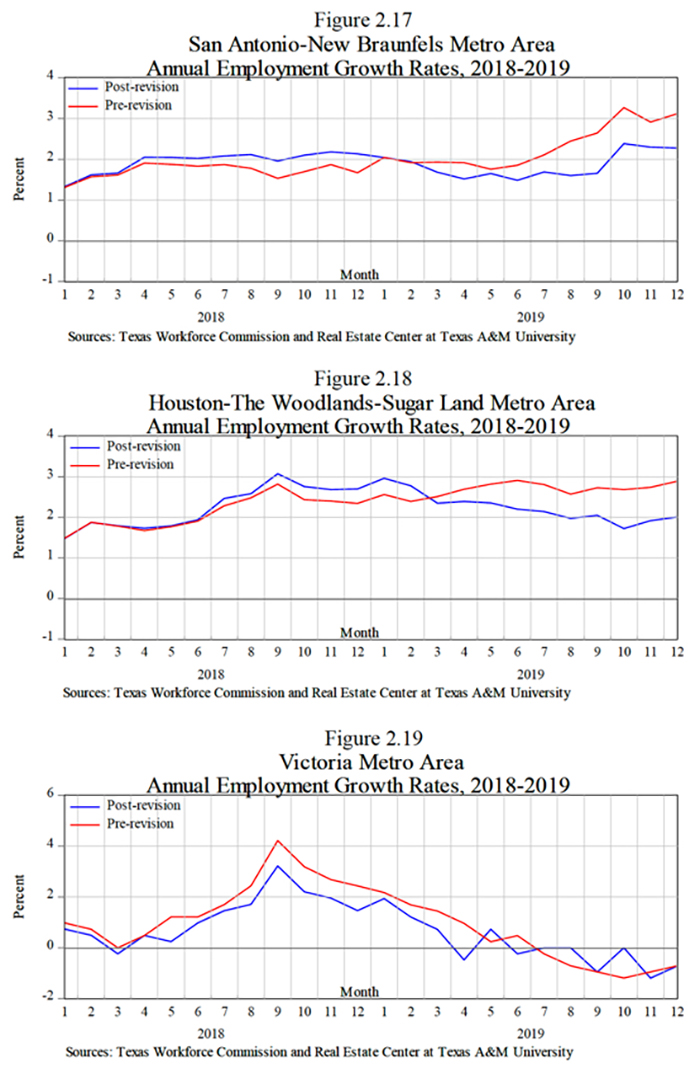


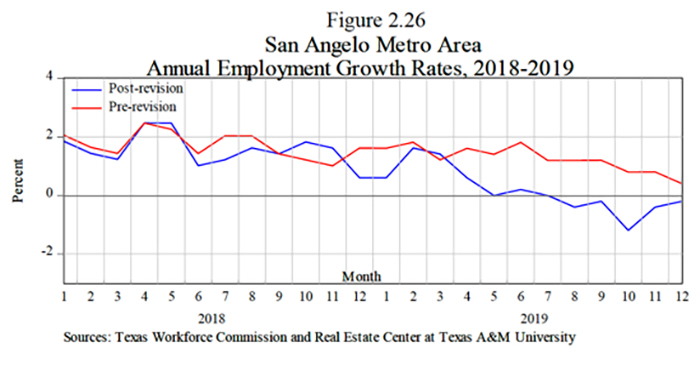
_______________
Dr. Anari ([email protected]) is a research economist with the Real Estate Center at Texas A&M University.
Receive our economic and housing reports and newsletters for free.
As the state’s population grows, so does the need for more housing. Here are the data and tools you need to keep up with housing market trends in your area.
Whether you’re talking about DFW’s financial services industry, Austin’s tech sector, Houston’s energy corridor, or the medical hub that is San Antonio, commercial real estate is big business in Texas.
Mineral rights. Water issues. Wildlife management and conservation. Eminent domain. The number of factors driving Texas land markets is as big as the state itself. Here’s information that can help.
Texas is a large, diversified state boasting one of the biggest economies in the world. Our reports and articles help you understand why.
Center research is fueled by accurate, high-quality, up-to-date data acquired from such sources as Texas MLSs, the U.S. Bureau of Labor Statistics, and the U.S. Census Bureau. Data and reports included here are free.
Stay current on the latest happenings around the Center and the state with our news releases, NewsTalk Texas online searchable news database, and more.
We offer a number of educational opportunities throughout the year, including our popular Outlook for Texas Land Markets conference. Check here for updates.
Established in 1971, the Texas Real Estate Research Center is the nation’s largest publicly funded organization devoted to real estate research. Learn more about our history here and meet our team.
Helping Texans make the best real estate decisions since 1971.
You are now being directed to an external page. Please note that we are not responsible for the content or security of the linked website.